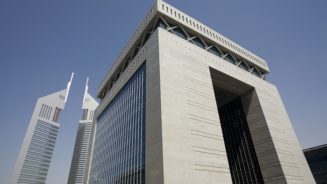Following president Jacob Zuma’s drastic cabinet reshuffle, which saw the dismissal of finance minister Pravin Gordhan, S&P Global downgraded South Africa’s long-term sovereign credit rating to BB, also known as ‘junk’ or ‘non-investment grade speculative’, on 3 April.
Fellow ratings agency Fitch following suit on 7 April, lowering the country’s rating to BB+.
Both agencies cited political instability following the cabinet purge as part of their rationale for the downgrades.
Old Mutual Investment Group chief economist Rian le Roux said at the time that, despite being widely predicted, South Africa’s downgrade remains deeply disappointing and undeniably self-inflicted.
“Ahead of the president’s decision to fire his highly respected finance minister and his deputy, conditions were actually gradually brightening enough for SA to cement its investment grade rating through fiscal consolidation, a moderate economic recovery, robust institutional strength and promising progress regarding issues around labour stability and troubled state-owned-enterprises.”
Moody’s retains the highest rating for South Africa, but has placed its rating on review for downgrade. It currently sits at Baa2, two notches above junk.
Knock-on effect for life cos
The reduction in South Africa’s credit rating has an inevitable impact on the country’s big institutions, which cannot hold a higher rating than their government.
S&P downgraded more firms on Tuesday, including Old Mutual Life Assurance Company and Sanlam Life, reports South African news source Fin24.
Old Mutual’s long-term South African national scale rating was downgraded to zaAA- from zAAA, while its short-term rating was affirmed at zaA-1.
S&P also downgraded Sanlam to zaAA- from zaAAA.
In a statement, the Sanlam said: “The lower ratings reflect S&P’s view that South African insurers face increased exposure to credit risk within asset portfolios following the sovereign downgrade, with the increased risk somewhat mitigated by sound balance sheet resilience.”
Banking sector fallout
Fitch Ratings downgraded Old Mutual’s Nedbank, as well as Absa, FirstRand, Standard Bank and Investec to BB+ because of the banks’ “high exposure to sovereign risk, through large holdings of government securities, exposure to sovereign-owned enterprises, and to the weakening operating environment”.
“All banks have strong franchises, sound management and governance, and solid financial metrics, which keep their [viability ratings (VRs)] at the level of the sovereign’s Long-Term[issuer default ratings (IDRs)],” Fitch said.
“However, their VRs are capped at the level of the sovereign’s IDRs because the majority of the banking groups’ operations are in South Africa and they have high exposure to domestic sovereign debt relative to capital.”
“The deterioration in sovereign creditworthiness brings increased risks to the banking sector. Higher borrowing costs for the sovereign will translate into further pressure on economic growth, which is likely to result in deterioration of banks’ financial metrics, in particular, asset quality, funding and liquidity, which is likely to have a knock-on effect on profitability and capital.
“Banks will have to build higher capital buffers to meet elevated risk in their operating environment to maintain their VRs,” Fitch said.





